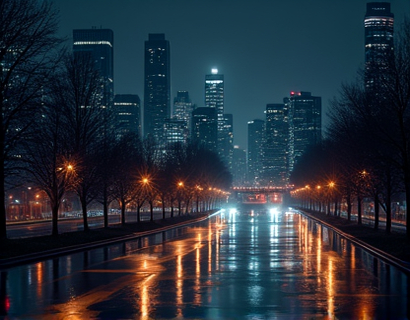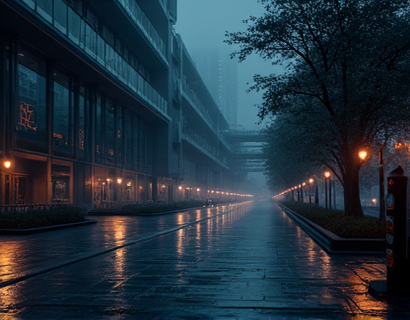Unveiling the Ancient Heritage and Local Wonders of the Indus Valley
The Indus Valley, a cradle of one of the world's oldest civilizations, beckons travelers and cultural enthusiasts with its rich tapestry of history, architecture, and natural beauty. Spanning across present-day Pakistan and northwestern India, this ancient region offers a profound journey into the past, where the echoes of a sophisticated urban culture still resonate. This comprehensive travel guide aims to provide detailed insights, practical tips, and hidden gems to ensure an unforgettable experience for those venturing into this timeless land.
Historical Significance of the Indus Valley
The Indus Valley Civilization, dating back to around 3300 BCE, is one of the earliest urban civilizations alongside those of Mesopotamia and Egypt. Its significance lies in its advanced urban planning, sophisticated water management systems, and a writing system that remains undeciphered, adding an air of mystery to its history. The civilization thrived along the Indus River and its tributaries, with major cities like Mohenjo-Daro and Harappa serving as centers of trade, culture, and governance.
Mohenjo-Daro, one of the most impressive archaeological sites, showcases the advanced engineering skills of the Indus people. The city's layout, with its grid-like streets, sophisticated drainage systems, and public baths, demonstrates a level of urban planning unmatched in the ancient world. The Great Bath, a central public bathing facility, is a testament to the civilization's emphasis on cleanliness and ritual purity.
Exploring Major Historical Landmarks
Visitors to the Indus Valley can immerse themselves in the remnants of this ancient civilization through several key sites. Mohenjo-Daro, as mentioned, is a must-visit, offering a glimpse into the daily life and architectural prowess of its inhabitants. The citadel, with its elevated platforms and public buildings, contrasts with the lower town, where residential areas and craft workshops were located.
Another significant site is Harappa, which provides a comprehensive view of the Indus urban layout. The site includes the Granary, a large storage structure, and the Bath Complex, similar to the Great Bath in Mohenjo-Daro. The Linear Pottery found here offers insights into the civilization's art and craftsmanship.
Kalibangan, located in the Indian part of the Indus Valley, is renowned for its early evidence of wheel-made pottery and a well-planned city with a citadel and a lower town. The site also features a unique fire altars and a sophisticated drainage system, highlighting the advanced engineering skills of the Indus people.
Cultural Heritage and Local Traditions
Beyond the archaeological sites, the Indus Valley region is rich in cultural heritage and local traditions. The area is home to a diverse population with a blend of ethnicities, languages, and religions. The cuisine, a fusion of North Indian and Pakistani flavors, offers a delightful culinary experience. Dishes like kebabs, biryani, and various types of flatbreads are staples, often seasoned with local spices that have been used for centuries.
Traditional crafts continue to thrive in the region, with artisans in cities like Lahore and Multan producing exquisite textiles, pottery, and metalwork. The intricate embroidery of Punjabi sherwani and the vibrant colors of Sindhi dresses are testaments to the area's rich textile heritage. Visitors can witness these crafts firsthand in local markets and workshops, providing a deeper connection to the local culture.
Practical Tips for Travelers
Planning a trip to the Indus Valley requires some preparation to ensure a smooth and enriching experience. First, the best time to visit is from October to March, when the weather is mild and comfortable for exploration. Summer months can be extremely hot, while winters can be cool, especially in the evenings.
Accommodation options range from luxury hotels in major cities to budget-friendly guesthouses and homestays in smaller towns. Booking in advance is recommended, especially during peak travel seasons. Local guides can provide invaluable insights and help navigate the less-known sites, enhancing the overall experience.
When visiting archaeological sites, dress modestly and wear comfortable shoes, as the sites can be extensive. Bring a hat, sunscreen, and plenty of water to stay hydrated. Photography is generally allowed, but flash photography is often restricted to protect the delicate artifacts.
Hidden Gems and Local Attractions
While the major sites are impressive, the Indus Valley offers numerous hidden gems that are worth exploring. One such place is the ancient city of Taxila, a UNESCO World Heritage Site located near Islamabad. Taxila was a major center of learning and culture, with ruins that include Buddhist monasteries, Hindu temples, and Greek gymnasiums, reflecting the region's historical diversity.
Another lesser-known gem is the Derawar Fort in the Thar Desert. This massive fort, with its 40 towers, stands as a testament to the region's military history. The surrounding desert offers opportunities for camel safaris and stargazing, providing a serene escape from the bustling cities.
For nature enthusiasts, the Cholistan Desert and the Indus Delta offer unique landscapes and wildlife. The Cholistan Desert, also known as the Great Indian Desert, is home to various wildlife species, including gazelles and foxes. The Indus Delta, where the Indus River meets the Arabian Sea, is a biodiversity hotspot with mangrove forests and a rich array of aquatic life.
Essential Resources for Travelers
To make the most of your journey, several resources can be invaluable. Travel guides specific to the Indus Valley, such as "The Indus Civilization: A Concise History" by J. P. Joshi, provide detailed historical context and practical advice. Online platforms like Lonely Planet and TripAdvisor offer user reviews and tips from fellow travelers.
For those interested in deeper historical research, academic journals and books on Indus Valley archaeology and culture are available through libraries and online databases. Local tourism offices in cities like Lahore and Karachi can also provide up-to-date information and assistance.
Technology plays a role too, with mobile apps and virtual tours offering a preview of the sites before your visit. Apps like Google Earth can help plan your itinerary by providing satellite views of the locations.
Conclusion
The Indus Valley is a treasure trove of ancient heritage and local wonders, offering a unique and enriching experience for travelers and cultural enthusiasts. From the sophisticated urban planning of Mohenjo-Daro to the vibrant local traditions, every aspect of this region tells a story of a civilization that thrived over 5,000 years ago. By following this guide, visitors can delve deeper into the past, connect with the present, and create unforgettable memories in this timeless land.










































